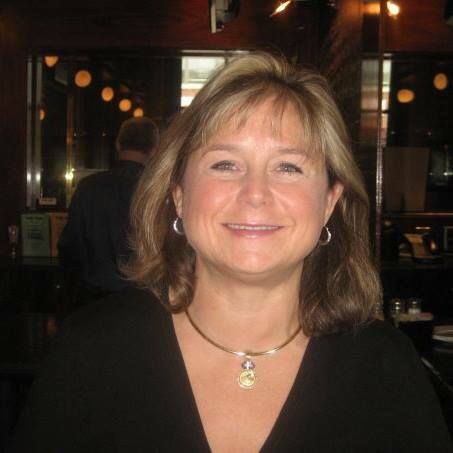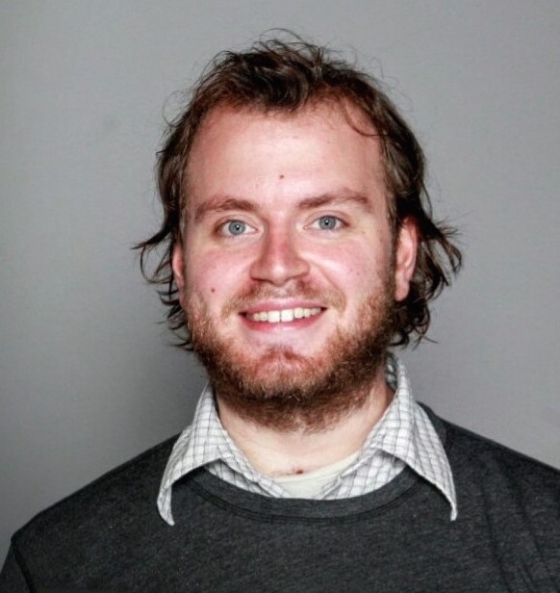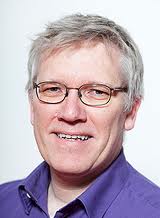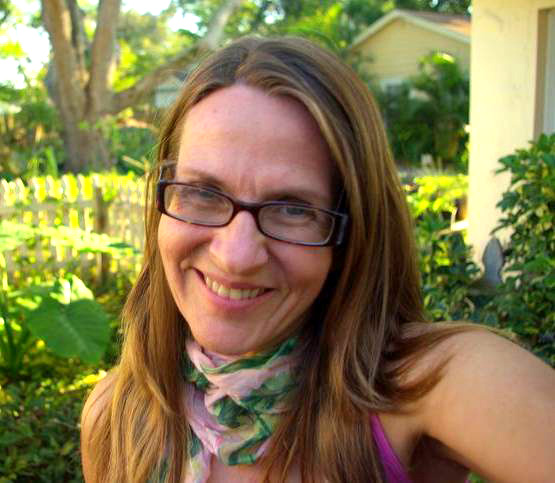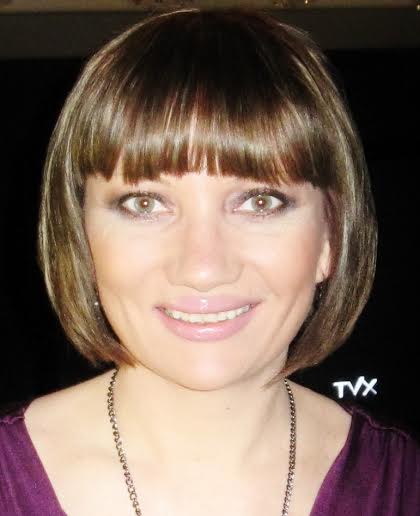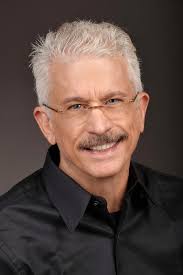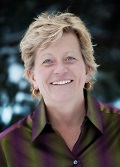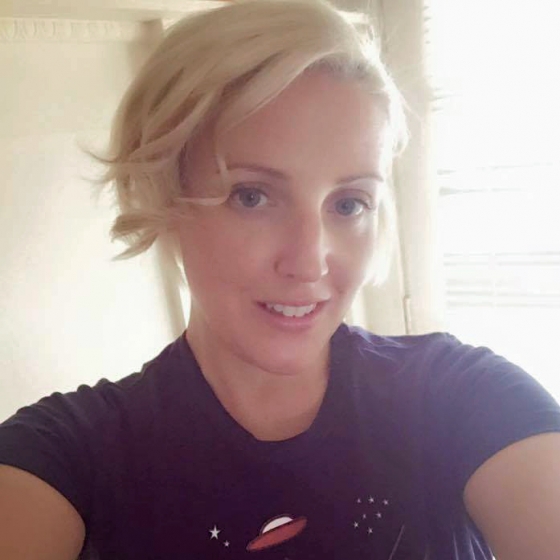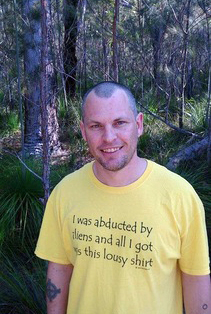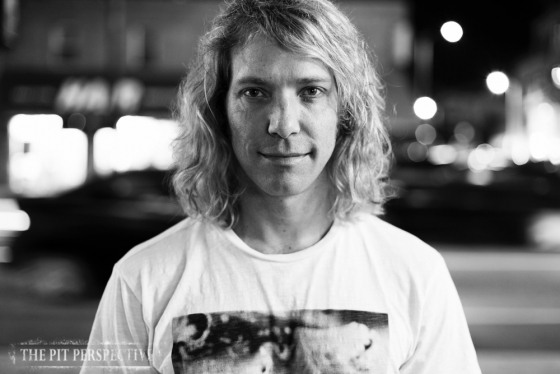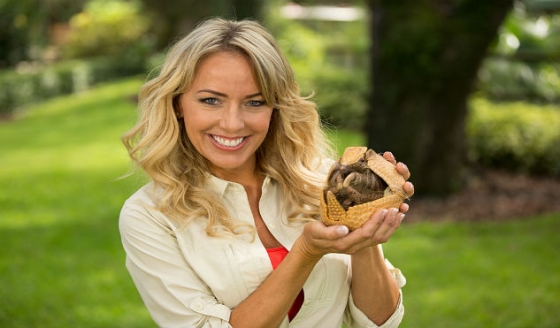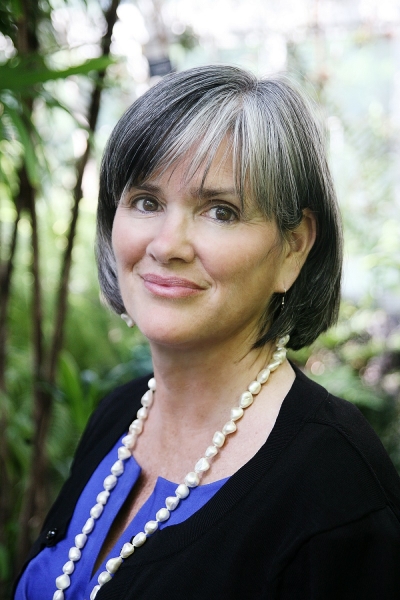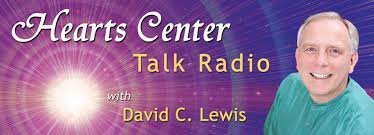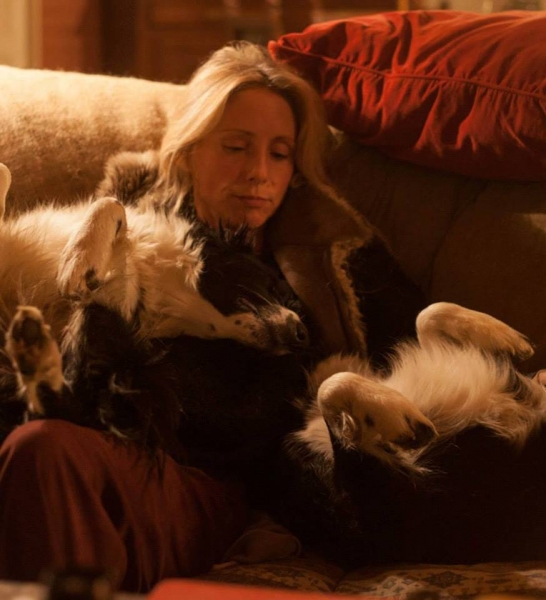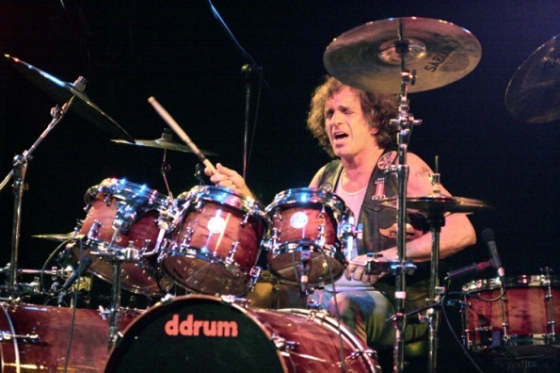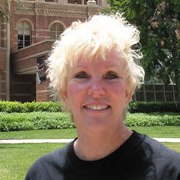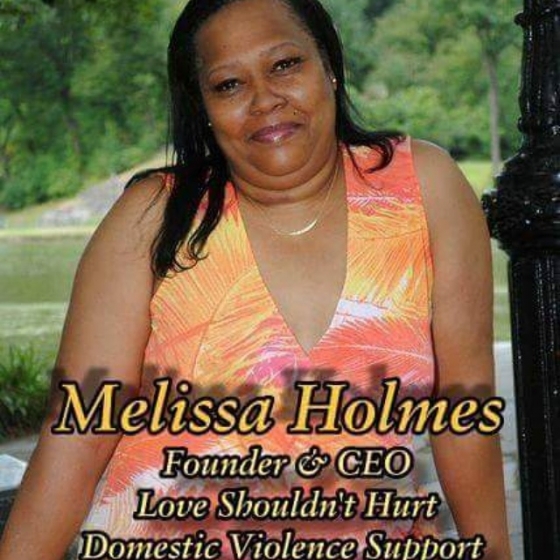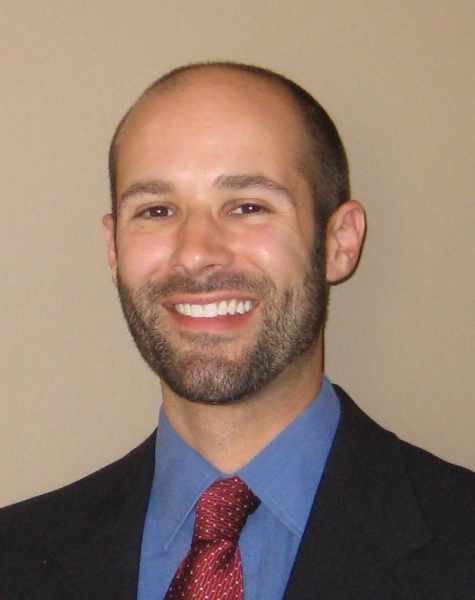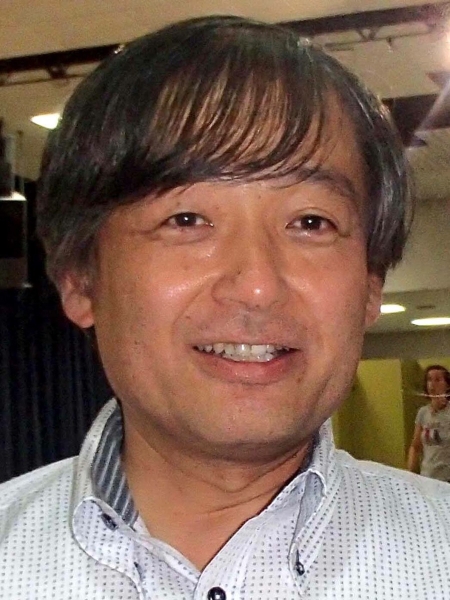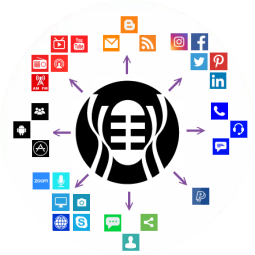Headlined Guests
Headlined Guests that have appeared on BBS Radio TV
Tracy Leigh Arneau, Ed.S. is a third generation educator. She has worked in public education since 2000 and with DPS (Detroit Public Schools) since 2002. She has taught both general education and special education.
For the last eight years she has worked as an early intervention specialist for children ages three to six years of age diagnosed with autism. As an advocate for children, she found her passion in supporting a public education system which works diligently to educate ALL children.
Her greatest belief is that children are our future and that has spurred her on to become an activist fighting to preserve and maintain quality public education in our country by working with the TRUE (Taxpayers, Residents United for Public Education) group that can be found on Facebook.
www.bgapublications.nl
GERARD AARTSEN
Author, speaker, researcher
After having travelled around the world as
a backpacker, Dutchman Gerard Aartsen
settled in Amsterdam as a translator in
1985. In the late 1990s he decided it was
time to change tack and eventually earned
his Master of Education degree from the
Amsterdam University of Applied
Sciences, where he has held a teaching
position in the department of secondary
education since 2001.
He has also been a student of the Ageless
Wisdom teaching for over 35 years and his
many years of study and research into the
Wisdom teachings resulted in the online
reference Our Elder Brothers Return – A
History in Books(2008).
Having acquired and studied some of the
more obscure writings by contactee
George Adamski, he wrote George Adamski
– A Herald for the Space Brothers(2010),
which critics acclaimed as a refreshing,
scholarly treatment of his subject. His
second book, Here to Help: UFOs and the
Space Brothers(2011), shows how the
messages from the pre-disinformation
contactees all agree on the spiritual
realities and the Oneness of Life. In
Priorities for a Planet in Transition – The
Space Brothers’ Case for Justice and Freedom
(2015), Gerard compiles what the Space
Brothers have shared since the 1950s in
terms of alternative, saner ways of
organizing society to tackle the crises that
have brought our civilization to its knees.
A long-standing co-worker in the
worldwide network of groups affiliated
with British esotericist Benjamin Creme,
the author writes regular contributions to
Share Internationalmagazine about the
extraterrestrial presence on Earth, is a
frequent guest on international radio and
TV shows about UFOs and related
subjects, and has lectured in America,
Europe and Asia. His books have been
translated and published in multiple
languages.
Books:
What is Permaculture ?
Implement, integrate and expand regenerative design solutions as broadly and deeply as possible, so as to create a higher quality of life and abundance for all living things.
Koreen Brennan is an internationally known permaculture designer and educator, focused on creating regenerative designs that address a number of key problems the world is facing today.
She has a wide range of experience, including master planning, growing hundreds of species of edibles in a variety of conditions and climates, running an edible nursery, business incubation and holistic economics, whole systems strategy and design, community development and facilitation, organizing events, and life coaching, so finds herself taking on diverse projects at times.
She organized permaculture style disaster relief for thousands of Haitians living in camps after the earthquake in 2010, has planted thousands of trees in different locations in the US, created dozens of gardens, coordinated the formation of the Sustainable Urban Agriculture Coalition St Petersburg, has organized natural building projects (straw bale, earth berm walipini) at Pine Ridge Lakota reservation and is a founding co-organizer for the North American Permaculture Convergence.
She has advised on public projects at schools, universities and on the Florida House "Green Home" project in Sarasota and is currently working on the strategy project "The Next Big Step" for the upcoming International Permaculture Convergence.
For larger design projects, she is a partner with Permaculture Design International, a full service design and installation firm.
https://www.facebook.com/koreenbrennan
David Ison is an internationally recognized intentional music master, composer, contemporary spiritual teacher, harmonic therapist, author, sound designer and Creative Director of TheraSound. His work integrates the essence of the great wisdom traditions, modern scientific understanding and his own personal path.
During his long career Ison has released over 40 sound healing programs, produced dozens of CDs, pioneered today’s interactive technologies and developed a powerful transformational practice: Meraki, The Science Of Creative Consciousness.Through the application of his intentional music and the practice of Meraki, he hopes to inspire the understanding that by transforming our basic inner programming and embracing our Essential Selves, we can truly begin to make a difference—individually, locally, and globally.
“What if I told you there was a way to unlock the power of your imagination and open the doors to your creative essence? An essence so powerful, so pure, that by accessing this Essential part of yourself, you would have the power to create wondrous things, sing amazing songs, tell moving, meaningful stories, build incredible buildings, bring forward harmonious inventions of all shapes and sizes and dance with the Gods themselves—all with the power of your imagination, all with the essential power of YOU.
There is such a way. It’s called Meraki. A practice so simple, so elegant, so natural that once you learn it, you’ll be bringing forward beauty and love, all through the understanding of how to step into the stream of the unfolding universe.” – David Ison
A lifelong interest in the nature of consciousness, the mechanics of personal choice and the Science of Sound, has inspired David to create dozens of intentional musical offerings. His critically acclaimed programs: The Musical Body Program, The Harmonizer, and Balance, just to name a few, are recognized by the medical community as being some the most clinically effective harmonic programs ever produced.
Imbued with his deep knowledge of the sacred Universal Laws, David’s programs are harmonic experiences that express his passion for personal transformation, deep healing and developing enlightened choice—a more conscious way of thinking that enhances our creative abilities and brings forward sustainable, results.
Years of study and meditation have made David’s work possible. A pivotal, life changing moment came in 1980 when a car accident left him with severe spinal injuries.
In order to avoid spinal fusion surgery and to recover full mobility of his legs and torso, David joined his musical skills with his extensive knowledge of meditation practices.
During his long recovery at home, David continued using the same breathing and meditation techniques and made another life-changing discovery. He found that when he focused his intention on the injured area while he was in this receptive state of mind, he not only relieved his physical symptoms, but he also experienced profound mental and spiritual benefits.
This miraculous experience inspired David to create transformational musical tools that would create the same kind of deep benefits he experienced while he was meditating.
After his accident, David began using his compositional and production skills to develop and clinically test the therapeutic uses of music and sound. He began to utilize the breathing techniques together with certain musical structures to relieve both the physical and mental pain brought on by the stress of the accident. His success in both removing his pain and improving his condition showed him how music and the breath could play a substantial role in the therapeutic, personal transformational process.
Slowly, David discovered how to join meditation techniques, modern harmonic theory, ancient musical traditions, and the art of recording with various therapeutic methodologies. By blending Ayurvedic, Chinese and the best of Western healing practices, the sciences of endocrinology and neurobiology, the energetic system of the body with the Science of Sound, a bridge between the worlds of art and science was created, TheraSound and the Ison Method were born. Out of this experience, he developed the compositional and psychological techniques that are the backbone of the music and meditation practices he offers.
Today, David Ison is internationally recognized as a pioneer in extending the healing effectiveness of sound, meditation and self-realization.
His extensive musical catalogue of intentional music and the Ison Method are used daily by health care professionals as well as interested individuals. David’s music is the medical profession’s consistent choice when they need stress reducing, transformational music.
David’s work has been extensively researched by some of the most prestigious medical institutions around the country and the world. In 1999 the National Institutes of Health published a three year study on his music, which clinically validated the music's capability to bring about the relaxation response within the listener-- as well as demonstrating that the music led to a significant reduction of a wide variety of symptoms.
As a meditator and teacher, David has a lifelong interest in the evolution of consciousness and the mechanics of personal choice. He teaches meditation both privately and to groups, concentrating on bringing self-actualization techniques into drug rehabilitation and domestic violence facilities.
David has chosen to dedicate his life to bringing forward a multidisciplinary transformational practice that encourages the development of self-love and personal responsibility. Through the application of his intentional music and meditation techniques, he hopes to inspire the understanding that by transforming our basic inner programming and embracing our Essential Selves, we can truly begin to make a difference—individually, locally, and globally.
David lives on a thirty-three acre estate in beautiful Ojai, California. An accomplished organic chef, he gratefully celebrates his incarnation by feeding the body, mind, and spirit and continues to expand the boundaries of consciousness through music, meditation, and conversation...and delicious food.
Lily Earthling is an Internal Researcher for our Organic Earth and Organic Sun, the current Matrix System and the return to the Original Earth Timeline.
"On my path of self-discovery and through a process of disintegrating the programs and belief systems I found in my own spirit."
Working with the Planet, nature and animals, Lily has found a way to harmonize her own spirit with Earth, creating a strong connection with our Mother-Planet. Through this connection, she has learned that Our Planet has a plan for Humanity all All Life On It! This plan is absolutely brilliant and it will take the Organic Earth and the Organic Sun out ot the Matrix System and back to the Original Earth Timeline.
Lily continues a journey of discovery and an unfolding of the Earth Human Plan where she shares many of her tools and information through her teachings on You Tube.
For More Information, please visit:
https://www.youtube.com/user/lvireb/videos
Earth Soul Group You Tube Channel:
https://www.youtube.com/channel/UCgIKFba7bCihxn4XfRgetgw/feed
Phillip Elton Collins is a teacher, healing arts therapist, conscious channel, former journalist, ad man, author/poet, and cofounder of the Angel News Network in Fort Lauderdale, New York City, and Los Angeles, and Modern Day Mystery School. His books include: Coming Home to Lemuria: An Ascension Adventure Story (being adapted into a stage play and screenplay), Sacred Poetry and Mystical Messages: To Change Your Life and the World (116 original poems and twenty Inner Earth messages), Man Power God Power (a volume of higher-realm teachings), The Happiness Handbook: Being Present Is the Present Phrases of Presence to Set Us Free to Be…Happy, Activate Your Soul Plan: Angel Answers & Actions, and God’s Glossary: A Divine Dictionary (definitions directly received from whence we all came). These books define author through words.
Lise Alschuler is a naturopathic doctor with board certification in naturopathic oncology and has been practicing since 1994. She graduated from Brown University with an undergraduate degree in Medical Anthropology and received a doctoral degree in naturopathic medicine from Bastyr University. Dr. Alschuler is past-President of the American Association of Naturopathic Physicians and a founding board member and current President of the Oncology Association of Naturopathic Physicians. She also currently serves as President Emeritus on the board of the Naturopathic Post-Graduate Association. Dr. Alschuler works as an independent consultant in the area of practitioner and consumer health education. She is the Executive Director of TAP integration, a nonprofit educational resource for integrative practitioners. She maintains a naturopathic oncology practice out of Naturopathic Specialists , based in Scottsdale AZ. Previously, she was the department head of naturopathic medicine at Midwestern Regional Medical Center – Cancer Treatment Centers of America. She was also the clinic medical director and botanical medicine chair at Bastyr, as well she was on the faculty of Southwest College of Naturopathic Medicine. The American Association of Naturopathic Physicians recognized Dr. Alschuler in 2014 as Physician of the Year. She also received an honorary degree from the Canadian College of Naturopathic Medicine and the Joseph Pizzorno Founders award from Bastyr University in the same year.
Dr. Alschuler is the co-author of The Definitive Guide to Cancer and The Definitive Guide to Thriving After Cancer. She co-created https://www.ithriveplan.com/, and co-hosts a radio show, Five To Thrive Live! on the Cancer Support Network about living more healthfully in the face of cancer. She calls Tucson AZ and Chicago, IL home.
Solreta Antaria is a caring compassionate clairvoyant born with natural psychic ability that has expanded to include ET Communication and UFOfilmology. She has seen & felt spirit from a very young age.
Working from the heart, Solreta sets up a clear safe space before each reading then tunes into positive messages & guidance to assist you in shedding light on your life path She brings forth various directions & opportunities life has on offer, tuning into a client's energy field (aura), seeing colors & symbols while often seeing Spirit guides, Angels, ET's & Ascended Masters. Solreta is based in Melbourne, Australia and works with clients around the globe via Skype. Solreta has also twice been a featured speaker at ECETI's annual conference.
Solreta uses Clairaudience & Empathic abilities to help people gain greater understanding & wisdom on their soul path. Solreta has a passion for high vibration Raw food, manifesting goals, sharing & helping others.
She has studied Kinesiology, Reiki, Crystal dreaming & has an Advanced Diploma in Health Sciences. She is known worldwide for her ability to receive communication from Star Nation Beings alerting her to UFO sightings which she expertly films. She has been interviewed on Japanese and Italian television. Solreta works in her own practice doing both Psychic readings & Kinesiology (combination of Chiropractic & Chinese medicine) specializing in reducing stress, allergies & goal setting.
Peter Maxwell Slattery is an experiencer, author, speaker, meditation teacher and he does energy and healing practices. His experiences started at an early age and continue to this day and he has witnesses to events and an overwhelming amount of photographic and video evidence of UFOs, Orbs and apparitions.
From his experiences with Extra-terrestrials, to inter-dimensional beings, Spirits and Source, all has led Pete to dedicate himself to the healing of the Earth and to the awakening of the human race by helping people find their own connection to Source, and their own inter-dimensional self. He also helps people to initiate contact themselves, on whatever level they are ready to do so individually and in a group, through love, good intent and meditation. Pete has appeared on Channel 7’s “Prime News” and “Sunrise” (which is one of Australia’s national morning news T.V shows), and he has also been on shows such as “The Unexplained with Howard Hughes” and “Podcast UFO”. He will also be a featured presenter at ECETI 2016, the annual July gathering at James's Gilliland's UFO Ranch near Portland, Oregon.
BEN MAURO
On November 3rd, 2015 singer, guitarist and songwriter Ben Mauro released his debut EP as a solo artist entitled “To L.A.” He also just finished a European tour with pop/funk icon Lionel Richie that included Europe’s biggest summer festivals. Ben’s extraordinary musical skills and dynamic stage presence has been the reason that he has remained a core member of Lionel Richie’s band for over fifteen years. Ben has also worked with many other artists including Kelly Clarkson, Britney Spears, Don Felder from the Eagles, John Fogerty, Christina Aquilera, Toni Braxton and also worked on projects produced by Peter Frampton and Prince.
Ben’s first single was released to rave reviews. Daniel Spears, Vice President of Industry Relations at BMI said:
‘Love this song… It’s got a great vibe to it with a lot of diversity…poppy, bluesy and country…Solid songwriting and some pretty nifty guitar work too!
I really like “Take Your Time.” It’s a very catchy tune that I know will be in my head when I wake up tomorrow morning.’
Ben’s second single “This Crazy Love” was released on July 14th, 2015. This is a catchy New Orleans style song that Ben also shot a music video for. The music video depicts the story of a girl trying to find love on the West Coast.
Ben’s EP was recorded with an all star cast of musicians including Oscar Seaton from Lionel Richie/George Benson on drums, Monet Owens from Boz Scaggs/Lenny Kravitz on Background Vocals, Ramon Yslas on Percussion from Stevie Nicks/Carlos Santana and Grammy award winner producer/mixer Ted Greenberg. Ben is already getting a reputation as an exciting solo performer. His single has an upbeat California vibe and you can hear influences from Jack Johnson, Van Morrison and Bruce Springsteen throughout this up and coming artist’s music.
Ben is endorsed by: Gibson Guitars, Taylor Guitars, Mesa Boogie Amps, D’addario Guitar Strings, Hercules Guitar Stands and Dunlop Guitar Picks.
But with Ben it’s not just about the music, it’s also about giving back. On every trip to Syracuse he goes to his old high school (West Genesee HS) and college (Onondaga Community College where he studied classical guitar) to talk with students. Ben gives them advice on how to have longevity in the music business and gives clinics to teach them the basics of music theory. In 2014 he started the Ben Mauro Endowment for Music Education at West Genesee; over the next four years he will make a donation to the school’s music department. He wants every kid to have every advantage to be able to play if that is their passion. Ben grew up playing the clubs of Syracuse then eventually moved to NYC where he landed the gig with Lionel Richie. Ben now lives in Los Angeles, California.
And if all that isn’t enough to keep him busy, Ben is also the host of his own travel music show called “Let’s Go! with Ben Mauro.” During his downtime on tour, Ben explores the cities he’s in and takes the viewer behind-the-scenes of the touring musician’s life.
RACHEL REENSTRA
Rachel Reenstra is the host of the fun, EMMY NOMINATED ABC weekend animal series “The Wildlife Docs”. Because of her skill at entertaining, and passion for animals and adventure, she previously starred in her own series on Animal Planet in a show called “Ms. Adventure” where she traveled the world comparing animal and human behavior.
Although finding animals to be the smarter of the species, she also has extensive experience with humans. She has a masters in Psychology, she hosted the number one design show on HGTV “Designed to Sell”, and in her extensive career she continues to appear in sitcoms, films, national commercials, and many, many voice-overs.
If there remains any time left over, you will find her performing stand-up comedy, inspiring audiences and emceeing large events all over the country.
Growing up in Michigan, Rachel Reenstra had no idea what to do with her life other than make people laugh and make life an adventure. After 10 years of plugging away at acting in Los Angeles, she landed her own series on Animal Planet called Ms. Adventure, where she traveled the world comparing animal and human behavior. Reenstra has been active in almost every kind of acting, including starring in dozens of sitcoms, commercials, voice-overs, hosting shows and performing stand-up comedy. When she wasn’t busy acting or traveling the world, she went back to school and earned a master’s degree in spiritual psychology. In addition, she spent her spare time as a life coach and relationship consultant. She plays guitar, banjo and counts among her special skills her ability to laugh at anything, especially herself.
Follow Her at: https://twitter.com/Rachelreenstra
Maureen McGill, MA, ( Theatre, Western Washington University) BFA, ( University of Utah Dance) Author, is an Associate Professor of Theatre and Dance at Pacific Lutheran University in Tacoma, Washington for over thirty-eight years. She directed the University Dance Ensemble and taught courses in Dance, Movement, Choreography, and continues now teaching in the area of Healing Arts of Mind and Body at the university.
Maureen’s keen interest in the intuitive arts has expanded her curiosity to the spiritual side of life. Maureen is a featured reader of tarot in the Pacific Northwest, appears at Intuitive Arts Fairs in the Seattle region and is a frequent guest on local and international radio networks. Her work has opened doors using symbols and metaphors to help those find light in the midst of loss and grief. It is a positive experience to share in the healing messages of the tarot.
Maureen is the author of the non-fiction book; Baby It’s You, Messages from Deceased Heroes, released by Ozark Mountain Publishing. This compelling, inspirational collection of true life messages from the other side, shared by widows, family members and friends of military, open our hearts to the unending love connections that never die! The book is available on Ozarkmt.com, Amazon and Kindle.
Maureen is the co-author with Nola Davis of Live From the Other Side, a non-fiction book, published by Ozark Mt. Publishing. It is a collection of real life stories of communication from the other side.
Maureen is a member of the International Association of Near Death Studies where she has presented at conferences, in Seattle, Newport Beach, and Denver. She is a board member of the Seattle IANDS organization. She is also a member of the Military Writers Society of America.
David Lewis on ‘Living a Soulful Life’ (book cover below)
The just-printed book, ‘Living a Soulful Life’, arrived 3 days before this show. There was a celebration at the Hearts Center Community – a worldwide Internet-streaming network – with a 17 minute ‘heartstream’ from the Maha Chohan honoring the Great Soul of Afra
David C. Lewis is the messenger of the Ascended Masters at the Hearts Center, and shares with us his intriguing story of the decade-long evolution of this book about Afra, the divine patron of Africa.
Afra exemplifies universal brotherhood/sisterhood and embodies the flame of freedom. In this book, he reveals how to connect fully to the light and fabric of our souls. Master Afra, whose name means “brother’, models the essence of soulfulness, kindness, and brotherly love. His stories, revelations and insights – from past civilizations to modern times – show us how to reconnect with the Divine for personal and planetary unity and enlightenment.
“The teachings in this book present keys to co-creating a brighter future for this planet by embracing a unity consciousness that sees all men and women as brothers and sisters, equal in intrinsic soul value regardless of race, religion or differing beliefs.” ~ Joan Holman, creator & producer of the award-winning Legacy of Achievement, PBS television
Embrace Your Soul’s Essence – Love, Brotherhood and Freedom
“There is no coming to consciousness without pain. People will do anything, no matter how absurd, in order to avoid facing their own Soul. One does not become enlightened by imagining figures of light, but by making the darkness conscious. » Carl Jung“Whatever is rejected from the self, appears in the world as an event.”
― C.G. Jung
Hello, I am a child of earth, and I have spent the last 5 years going through a radical personal healing. Throughout my journey, I have fallen into a few traps since my full on awakening. It happened one morning when i immediately and profoundly knew we were all ONE. From that moment, my experiences took on new dimensions...
I am here to help others through the earthly maze, to assist in the discovery of the Self, residing underneath the many layers. My intention is to spread truth, to empower others to unplug from artificial timelines, and to help in connecting to the authentic, organic essence.
It's a necessary aspect of awakening to see through the lies, and for each and every one of us to find our authentic, full bodied, inner child. Once found and awakened, our natural connection to Mother earth-Spirit is instantaneous. We automatically gain access to all of her/our inner truth... a vast, wordless "knowingness".
Victoria's blog: https://victoriacottonblog.wordpress.com
Victoria's YouTube Channel: https://www.youtube.com/channel/UCgRpJI3f0AW4QG77oiwZTGQ
Canadian powerhouse drummer Corky Laing is essentially associated with rock and roll folklore and as one of the elite drummers in the world. Laing is a longtime member for hard rock/heavy metal giant’s Mountain and the blues-rock power trio of West, Bruce & Laing. But Laing’s musical collaborations are seemingly endless. A list that includes alliances with John Lennon, Jack Bruce, Meat Loaf, Noel Redding, Mahogany Rush, Ten Years After, Ian Hunter, Mick Ronson, Bo Diddley and Gov’t Mule …to name a few. Laing is also a producer and composer.
Corky Laing has recently added a brand new chapter to his illustrious musical career. Laing’s most recent project is a fascinating collaboration with two internationally acclaimed professors (Prof. Matti Häyry and Dr. Tuija Takala) intermingling the decree of genetic engineering with a rock opera music scheme. The concept album entitled … Playing God is performed by the Perfect Child, an incredible ensemble of musicians and singers. At the core of the rock opera is Corky Laing who astounds instrumentally, lyrically and vocally. The album concept is brilliant and the music is colossal. It’s an awe-inspiring rock musical production and a cross between … Welcome to my Nightmare, The Wall and The Rocky Horror Picture Show.
Corky Laing also records and performs live with his band Corky Lang & The Memory Thieves featuring Bonnie Parker & Denny Colt. Both bandmates also performed magnificently on the Perfect Child rock opera. The Memory Thieves released the album House of Thieves in 2012.
Corky Laing studio and live albums with Mountain … Climbing! (1970), Nantucket Sleighride (1971), Flowers of Evil (1971), Mountain Live: The Road Goes Ever On (1972). Avalanche (1974), Go for Your Life (1985), Man’s World (1996), Mystic Fire (2002), Masters of War (2004).
Corky Laing studio and live albums with West, Bruce & Laing … Why Dontcha (1972), Whatever Turns You On (1973), Live ‘n’ Kickin’ (1974).
Other studio releases featuring Corky Laing … Corky Laing- Makin’ It on the Street (1977), The Secret Sessions (1999), Cork- Speed of Thought (1999), Cork- Out There (2003), Jason Hartless Jr. –First Division (2004), Stick It! (2004).
Most Recently 'CORKY LAING PLAYS MOUNTAIN' is touring worldwide
Sitting in with K2 (Peter Baron, Ken Sidotti & Joe Venti), a band saluting Mountain’s music, for a couple of gigs during 2014 and 2015 reminded Corky how much he liked playing Mountain songs the way they were originally written. Now he is looking at touring both Europe and the US celebrating the Mountain legacy. On the European tours Corky is joined by Joe Venti (formerly e.g. Leslie West Band) on bass and vocals, and Phil Baker (e.g. Uriah Heep Legends & Pulse Echoes of Floyd) on guitar and vocals. In November 2015 they tour the UK and in February 2016 Germany, playing the immortal Mountain classics and throwing in some West, Bruce & Laing and Cream for good measure.
LIVE Dates ...More to come
***
CORKY LAING plays MOUNTAIN – German Tour 2016
2/9/2016 Meisenfrei, Bremen
2/10/2016 Markthalle, Hamburg
2/11/2016 Roxy, Flensburg
2/12/2016 Kulturwerksta, Melle-Buer
2/13/2016 Beavers, Miltenberg
2/14/2016 Rock Jungfer, Arnstadt
2/15/2016 Kofferfabrik, Fürth
2/16/2016 venue tbc, Bernau
2/17/2016 Harmonie, Bonn
***
CORKY LAING AND THE PERFCT CHILD – PLAYING GOD: THE ROCK OPERA
4/8/2016 Cultural Arena Gloria, Helsinki, Finland
4/9/2016 Cultural Arena Gloria, Helsinki, Finland
***
Here’s my interview with legendary drummer, composer, producer, singer, and member of classic rock legend’s Mountain and West, Bruce & Laing … CORKY LAING.
GRETA BERLIN (France/USA), Board Secretary Greta Berlin is one of the founders of the Free Gaza Movement. She has been an advocate for justice for the Palestinians since the early 60s. She is the mother of two Palestinian/American children whose father was born and raised in Safad, Palestine and is a 1948 refugee. She has a masters degree in Theatre and journalism and a bachelor’s in English and theatre.
She was on the first voyage in August, 2008 and helped run the next four voyages, all successful in entering Gaza in 2008. She was one of the major spokespersons for Freedom Flotilla I and has continued as the media contact for Free Gaza. She is the co-editor and co-author of the book, Freedom Sailors, the story of the first voyage to Gaza and how we succeeded in spite of ourselves.
ABOUT FREEDOM SAILORS by Greta Berlin
FREEDOM SAILORS is a much-needed account of how a small group of ordinary people conceived and executed what seemed like a grandiose and audacious plan to break Israel’s illegal military blockade of the Gaza Strip, a blockade that keeps more than 1.5 million people in an open-air prison. Knowing what we know now – that Israel Defense Forces would later murder nine people, including an unarmed American citizen, Furkan Dogan, executed at point-blank range during a later Freedom Flotilla – our chutzpah is astonishing.
In a little over two years, we raised the money to purchase two dilapidated fishing boats stored in secret ports in Greece, collected 44 passengers, crew and journalists, aged 22 to 81 and chose Cyprus as our embarkation point.
People who weren't there or weren't close to us may not realize just how isolated we were once we finally set sail to Gaza on the late morning of August 22, 2008; over 33 hours on the sea, no internet, and only a couple of satellite phones which were blocked by the Israelis after night set in.
That first voyage in 2008 achieved exactly what we hoped it would. We opened the door just a bit, proving it could be done. None of the later actions, by land or by sea, would have been possible or even attempted if we hadn't climbed into two ramshackle boats with nothing but our determination and our naiveté holding us together.
Our story of how we came together, raised the necessary money, and pulled off the successful voyage, despite the prying eyes of Israel’s intelligence service, the Mossad, is often riveting.
More to the point, it helps us understand the importance of taking a stand when you see an injustice rather than becoming complicit through silence.
"Freedom Sailors is a powerful record of the political and humanitarian activity of some of the best humans we are ever likely to meet, or learn about. These women and men leave us with the most wonderful of questions: Is human courage and sacrifice the same as love? And is it this love for ourselves collectively, as humans, that has a chance of saving us and our planet? To read this book is to see what we can be like, in the face of imminent danger."
~ Alice Walker, Earthling poet, writer and activist
'Love Shouldn't Hurt NY, Inc.' is a Domestic Violence Awareness and Support Group. LSH is comprised of victims, survivors and supporters. After surviving two abusive relationships, I, Melissa Holmes, started LSH as a secret group on the social networking site, Facebook. I was looking for an arena to vent, post and provide support for people who have also suffered abuse. LSH started with about 30 members, we now have well over 1000 members worldwide.
LSH is giving a sense of purpose through daily prayers and supportive posts, motivating people to leave abusive situations and helping victims heal after abuse. There have also been occasions where LSH has assisted victims escape from their abusers. For 4 years LSH has encouraged, enhanced, empowered and elevated Domestic Violence awareness. Now we are campaigning against Domestic Violence in communities by paying forward what we receive inside LSH with combined acts of service and support.
I AM A SURVIVOR - and you can be too!
What is Domestic Violence?
Domestic violence is when one person does a variety of things to control another person in an intimate relationship. The shift in power can happen very slowly, over a period of time, so that the other person cannot even remember when it happened. Or it can happen very quickly after there is some sort of commitment or some change in the level of intimacy.
Many people wonder if what is happening to them is domestic violence because their partner has never hit them. Physical abuse is probably what most people think of when they think about domestic violence, but it is just one of the many ways that your partner might try to gain power and control in your relationship.
Ways a person might try to gain power and control over their partner include:
Isolation - making it hard for you to see your friends and family; telling you that your friends and family cause problems in the relationship or are trying to "come between you."
Economic abuse - having complete control over the money; making you account for every penny you spend; taking your money from you.
Verbal, emotional, psychological abuse - calling you names; putting you down or embarrassing you in front of other people; criticizing your abilities as a partner or parent.
Intimidation - making you afraid with a look, action, or gesture; getting you to do something by reminding you about "what happened last time."
Coercion and threats - showing you a weapon and threatening to use it on you; threatening to "out" you to family, friends, or employers if you are gay or lesbian; threatening to harm your family, friends, or anyone you might go to for help.
Physical abuse - pushing, grabbing, hitting, slapping, punching, or kicking you.
Sexual abuse - forcing you to have sex when you don't want to; making you engage in sexual acts that make you uncomfortable; forcing you to engage in prostitution.
Using children - undermining your authority with your children; threatening to take the children away from you by kidnapping or getting custody of them; "pumping" your children for information about you.
Minimizing, denying, blaming - making you think the abuse is your fault; saying the abuse was caused by stress, alcohol, or problems at work; denying that the abuse happened at all.
Abuse is not always physical.
These are some of the most common ways that abusers try to control their partners, but certainly not the only ones. If your partner does things that restrict your personal freedom or that make you afraid, you may be a victim of domestic violence.
You are not alone. Millions of people are abused by their partners every year. But it is important to know that more resources are available now than ever before to help women and their children be safe.
Why do Abused Women Feel Trapped?
Many people who are abused by their intimate partner just want the violence and abuse to stop, but they don't want the relationship to end. But even when they do want to get out of the relationship with the abuser, it's hard.
Under the best of circumstances, it is not easy to end a relationship with an intimate partner. Love, family, shared memories, and commitment are bonds that are hard to break. Cultural or religious beliefs may be barriers to ending a marriage. Immigration status may be another obstacle. While ending a relationship is hard for everyone, women who are abused face the added risks of physical, emotional and psychological harm. There are risks that come with every decision an abused woman makes.
Donations can go to:
Melissa Holmes
c/o Love Shouldn't Hurt
949 Ogden Ave #1D
Bronx, NY 10452
Adam Lankford is a criminal justice professor at The University of Alabama.
He conducts research on many types of social deviance and criminal behavior, including mass murder, mass shootings, terrorism, and sexual assault.
Dr. Lankford is the author of two books, and he has published articles in numerous peer-reviewed journals. He has also written for The New York Times, Foreign Policy, Wired, The Daily Beast, New Scientist, The Mail on Sunday, Scientific American, and The Huffington Post.
Dr. Lankford's research has been featured by CNN, MSNBC, Fox News, BBC World News, The New York Times, The New Yorker, The Wall Street Journal, The Washington Post, The Boston Globe, The Chicago Tribune, The Los Angeles Times, Newsweek, Time, USA Today, NPR, BBC Radio, CBS Radio, and many other national and international outlets.
From 2003 to 2008, he helped coordinate Senior Executive Anti-Terrorism Forums for high-ranking foreign military and security personnel in conjunction with the U.S. State Department’s Anti-Terrorism Assistance program. During this period, ATA hosted delegations from Armenia, Colombia, Georgia, India, Indonesia, Malaysia, Morocco, Pakistan, Tunisia, the United Arab Emirates, and Uzbekistan.
Dr. Lankford received his Ph.D. and M.S. in Justice, Law & Society from American University in Washington, DC and his B.A. in English from Haverford College outside Philadelphia, PA.
Dr Yasuyuki Nemoto received a Doctor of Science in Cellular & Molecular Biology from University of Tokyo in 1988. After working for several universities in Japan, Miami and Honolulu in the fields of biology and biotechnology, he started to work for the late Dr. Masaru Emoto in 2002 as his international secretary. Dr Nemoto joined Dr Emoto on lecture tours in more than 25 different countries all over the world in the past 13 years.
He has been in charge of the scientific aspect of Dr. Emoto's work. His life theme is to integrate science and spirituality through the study of water. Very recently, Dr Nemoto has started lecturing worldwide about the possible relationship between “Message from Water” and the scientific theories about water proposed by the late Dr. Jacques Benveniste, as well as Dr. Gerald Pollack and Dr. Luc Montagnier.
From September to October, 2014, Dr Nemoto did a 4-week lecture tour in Germany, UK, Italy and Bulgaria on behalf of Dr. Emoto (who was ill at the time) and gave 13 lectures on “Message from Water and Science” very successfully including at the International Water Conference in Bulgaria, which was for professional scientists.
Dr Nemoto's current focus is the radioactive pollution of our environment due to the accident at the Fukushima nuclear power plant on March 11, 2011. He is currently working on a collaborative project between humanity and extraterrestrial intelligence to cleanse the pollution and revive the environment of this planet Earth.
Currently, Dr Nemoto is Director of IHM General Institute and President of Office Masaru Emoto, LLC.

